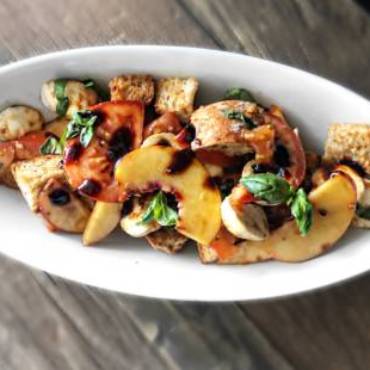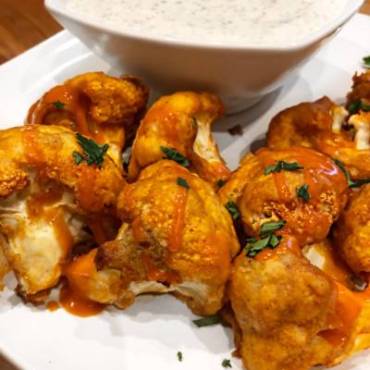It’s July.
While this means BBQs and beaches for most of you, for me it means I’m a culinary school graduate!
That’s right—I’m finished!
I’ve julienned and jardiniered.
I’ve made my own ice cream and rolled out ravioli from scratch.
I’ve played with a butchered pig head. I’ve cured meat. I’ve made countless dinners for mass quantities of culinary students.
I can recite correct temperatures of meat without thinking about it and I’ve been given the stamp of approval by the health department.



I’ve made duck and quail.
Stews and desserts.
I’ve made friends…
I’ve eaten more salt than EVER imaginable.
I’ve gained 5 pounds (okay… More like 10).
After four levels and an extensive externship—I’m finished.
Instead of a recipe this week, I thought I’d give you some helpful tips I’ve learned over the past year and a half.
This is by no means meant to be an all-inclusive list (I’d need a book, not a blog, for that!). Instead, it’s an insider’s look at tricks of the trade! Some of these are insightful, some are just plain old common sense. But, ALL of these tips are things I’ve either learned or didn’t realize until culinary school. So, here ya go!
 April 2017: First day of culinary school!
April 2017: First day of culinary school!  June 26, 2018: Last day of culinary school!
June 26, 2018: Last day of culinary school!

· Acid turns green vegetables a yucky brown color. Lemon is acidic. If you love the fresh lemony taste (which honestly who doesn’t?!), but think brown vegetables are gross (insert green emoji face here); season with lemon juice just prior to serving, NOT while cooking.
· In culinary school, they taught us to cook each vegetable separately because they are different sizes and thus will be done at different times. If you’ve got time for this, fabulous. If not, the insider’s trick is to just cut them all the same size so they cook evenly.
· Buy an oven thermometer! They’re super cheap and can be extremely helpful. My oven was off by 50°!
· Sucs! These are the little brown bits that are left over at the bottom of the pan when you cook something. They are FULL of flavor. Don’t toss them out! You can use them to add to sauces or other dishes to amp up the flavor.
· If you’re having trouble removing these brown bits of gold stuck on the pan (or scrambled eggs, or burnt food, or sauces, or basically ANYTHING)—don’t fret! Just make sure the pan is really hot and pour some water into it. With a wooden spoon, start scraping. They come right off! It’s much easier than using a sponge, not to mention you’ll use way less elbow grease.
· When sautéing, add oil, then make sure the pan is really hot before adding the food. This ensures the food doesn’t stick to the pan. Not sure if it’s hot enough? Gently shake the pan with the handle. You should see little ripples in the oil if it’s at the right temperature. You can also lightly brush part of the food across the pan. If it doesn’t stick, you’re at the right temperature.
· Don’t move food for a minute after adding it to the pan. This was an extremely hard lesson to learn in culinary school because they constantly have you shaking the pan back and forth (essentially leaving your wooden spoon useless). What we learned though, is that if you immediately move the food once you add it to the hot pan, you’ll end up ripping the outer layer of the item you’re cooking.
· Dry measurements do NOT equal liquid measurements. 1 oz of water does not equal 1 oz of flour. Dry ingredients should be weighed.


· Add garlic to cold oil. If you add it to hot oil it will cook way too fast and end up burning, making it taste bitter because it cooks too quickly. (As a garlic lover I can tell you—you do NOT want bitter garlic.)
· Same goes when poaching potatoes, add them to cold water and then turn up the heat. Potatoes cook from the outside in, so if you add them to boiling water they will likely overcook on the outside and be undercooked on the inside.
· You can make your own garlic paste by first lightly salting a cutting board. Using your knife, drag minced garlic across the salt back and forth to create a paste.
· If you’re making potatoes ahead of time, cut them and hold them in water. It’ll stop them from turning brown.
· Cook garlic prior to adding it to food. If you don’t, it’s way to overpowering of a flavor– almost spicy.
· If something tastes too acidic, add salt. It’ll balance out the flavor. (What’s too acidic? It’s when your mouth puckers after eating something, leaving tingles along the sides of your jaw.)
· If you’ve made something too spicy, add honey, molasses, or something sweet to tone it down.
· Wanna be fancy? Use a carrot peeler to shave parmesan cheese as a garnish.
· If you cut radishes into ice water, they curl making them prettier.

· Onions have certain enzymes, that when cut get released to form an acidic gas. When this gas hits our eyes, it stings causing us to tear in defense. If you’ve got a lot of onions to cut, place them in the fridge or soak in water prior to cutting them. This will help to mellow the gases that are released when onions are cut and decrease/prevent you from smearing your mascara.
· Anything cut on a bias looks nicer.
· When cutting anything round, make it easier on yourself. Cut the item in half and the place the flat side against the cutting board. This way your food won’t be wobbling around making your knife an enemy instead of your friend.
· Meat should always rest before slicing. If you don’t let it rest, when you cut into it all of the juices (A.K.A flavor) will escape. In school, they said to rest it 10 minutes… I recommend 5 as a good “resting time,” so it’s still warm when you serve it.
· The center of a garlic clove is called the “germ.” When garlic is young, you sometimes can’t even notice where the germ is. However, as garlic ages this center becomes green and develops a bitter taste. It’s very easy to remove, simply cut the clove in half and take it take it out! (Don’t see the germ? Don’t worry about it–that means it’s still young!)
· I used to buy “light” extra virgin olive oil because I figured it was healthier. If you read the nutrition facts, they are exactly the same as what’s on the regular extra virgin olive oil label. The difference is in the taste and process of how it’s made. With light olive oil, the olives are pressed a second time, creating an oil that’s not as flavorful as the regular oil. (I guess “light” is referring to “light in flavor”) Now, I always stick with regular olive oil and so should you!
· Even though I can make soufflés and duck confit, I have the darndest time peeling an egg. I don’t know why—but that stupid shell never seems to come off easily for me. I always end up with a mangled egg white that barely resembles an egg and looks more like I’ve put the egg in the garbage disposal (that I don’t have). If you have similar dilemmas when boiling eggs, add vinegar to the water before it starts to boil. It really helps the shell come off easily! It also helps if after you boil the egg, you place it in cold water for ~10 minutes, making sure to change the cold water a few times (because the eggs will make your cold water hot).
· When poaching new or finglering potatoes, cut them in half—it makes them creamier.
· We learned this technique of cooking a’langlaise with vegetables in school. I use it all the time when I have to cook for a lot of people at once. Basically, you boil/cook food until it’s done, then plop it in a bowl of ice water (so that it stops cooking and retains its bright color). When you’re ready to serve, just reheat it for ~20-30 seconds and voila!
· Adding salt to your scrambled eggs and letting them sit for ~10 minutes helps them to become fluffier when they’re cooked.
· One of the first things they taught us—work over a bowl! This may sound cumbersome at first. Believe me, as someone who doesn’t have a dishwasher, dirtying an additional bowl makes me crazy. Trust me when I say, this will change your life! If you’re peeling a carrot, do it over a bowl. Slicing an onion, have a bowl next to you to put the items you are going to throw away. This saves tons of time during clean up, just walk to the trash and turn the bowl over!
· Peeling celery stalks prior to cutting them will make them less stringy and fibrous. It’s less nutritious that’s for sure, but the texture will be better.
· It’s always helpful to have roasted garlic on hand. Cut the top off of a head of garlic and place it in aluminum foil with a drizzle of olive oil. Bake it at 400° until its soft. Squeeze from the bottom and the cloves should slip right out of the peel.


Thank you to everyone who made this journey possible and extremely memorable! I’ll still be writing my weekly recipe posts, but at least now you’ll know you can trust its from someone who is officially a culinary school graduate! (And note that I maintained the perfect attendance “achievement” that I also had in the fourth grade!)
Make sure to check out my book an event page to see what I can do for your next big day!




